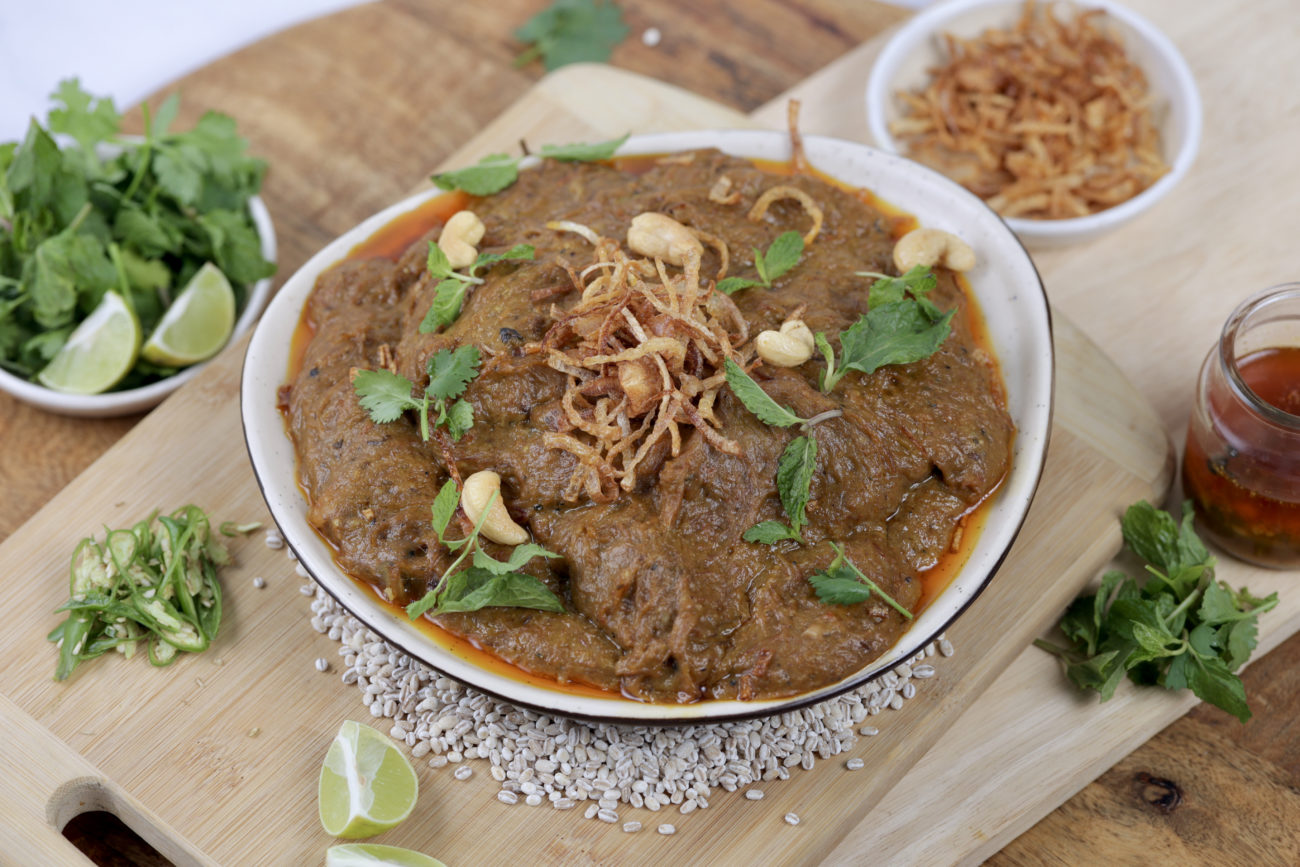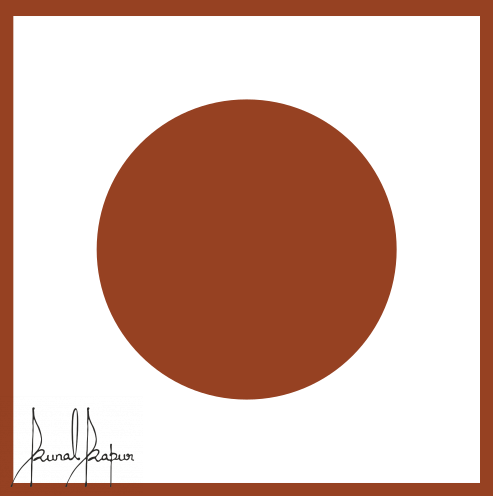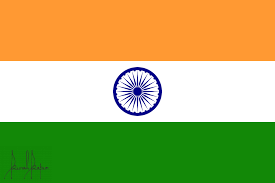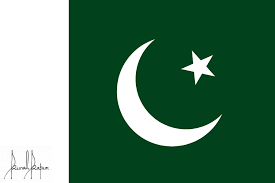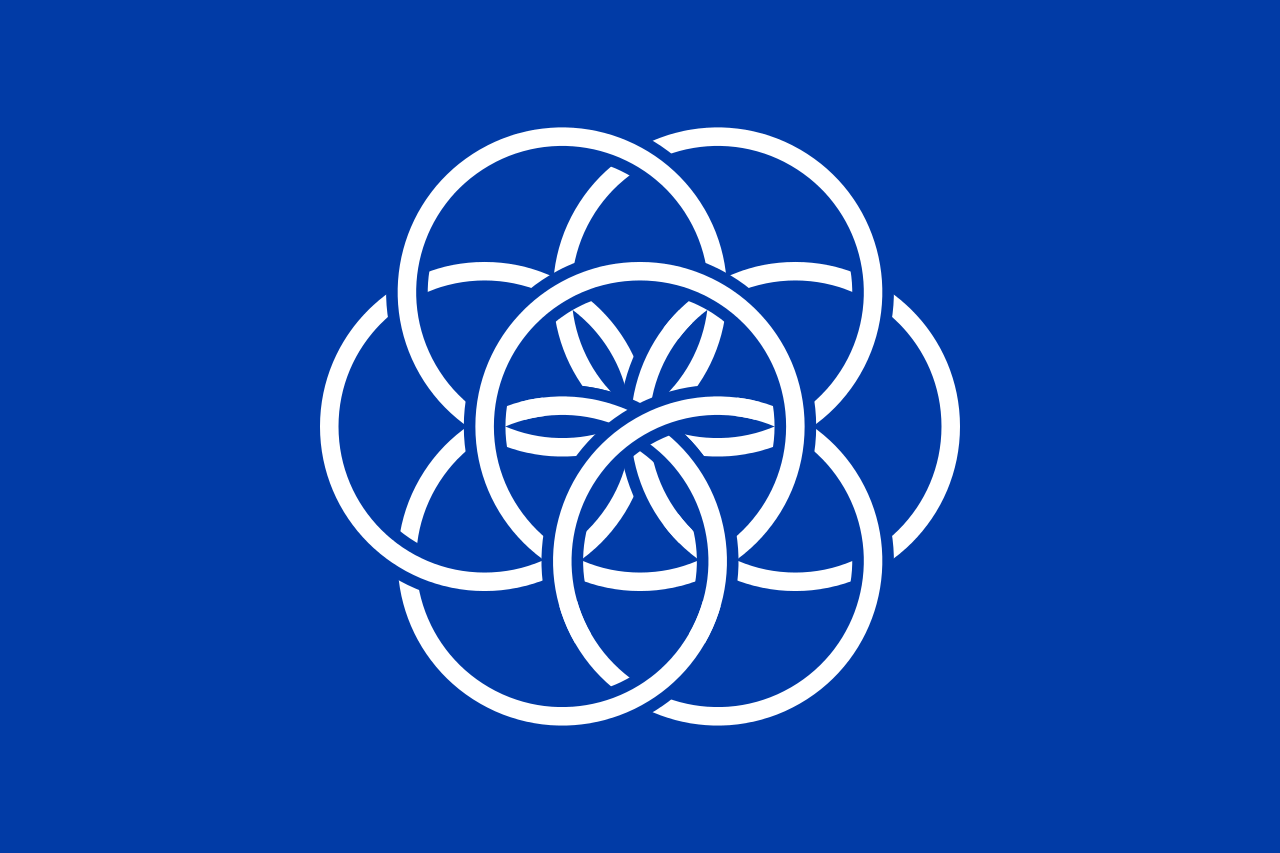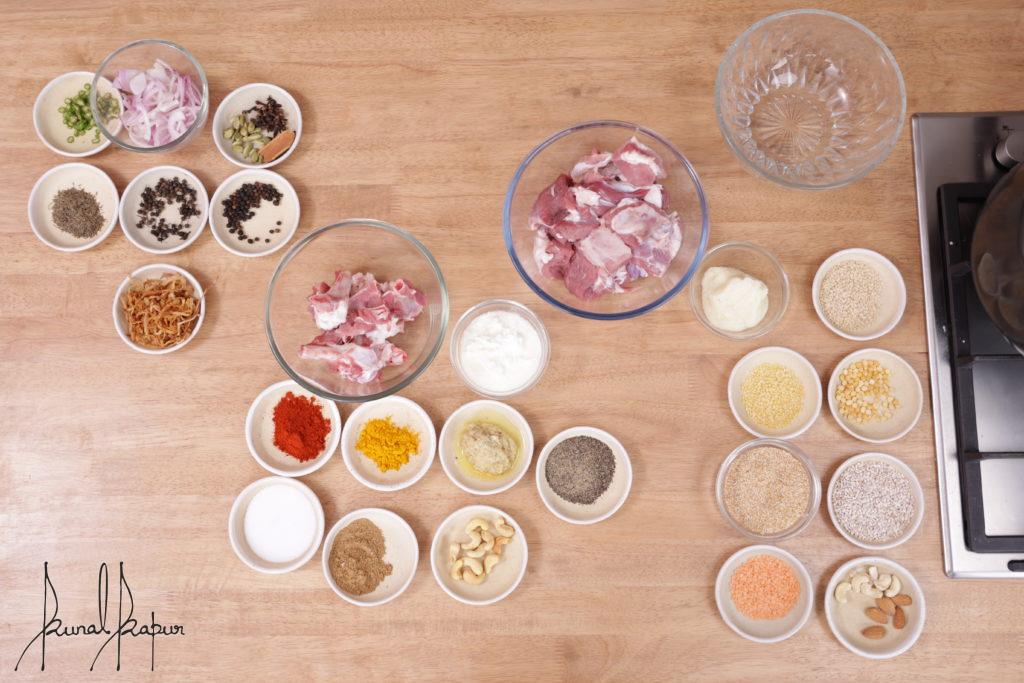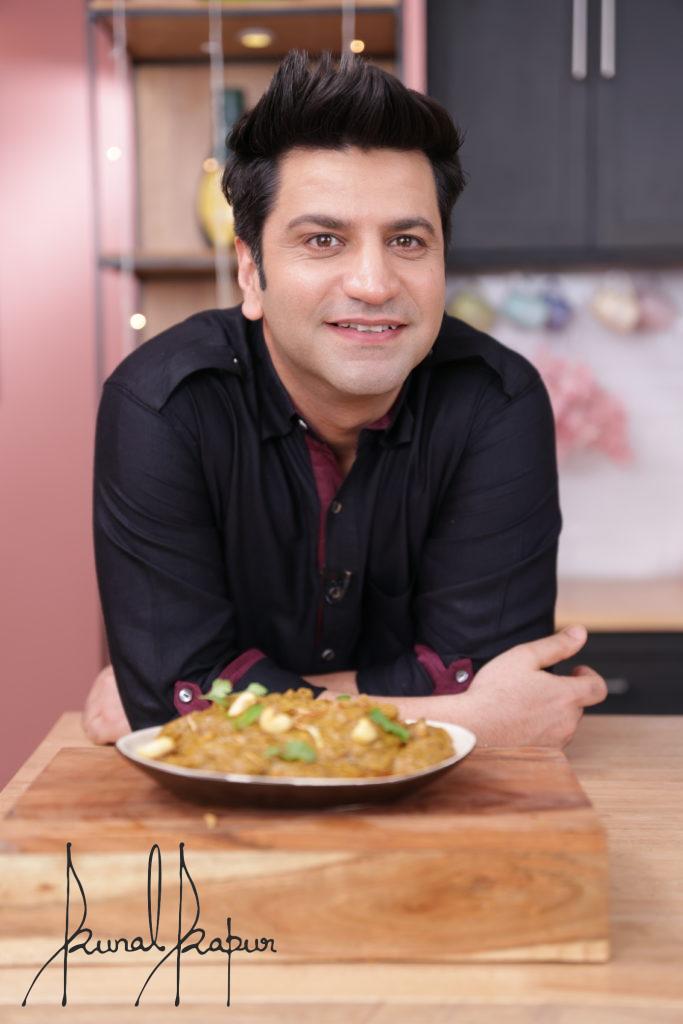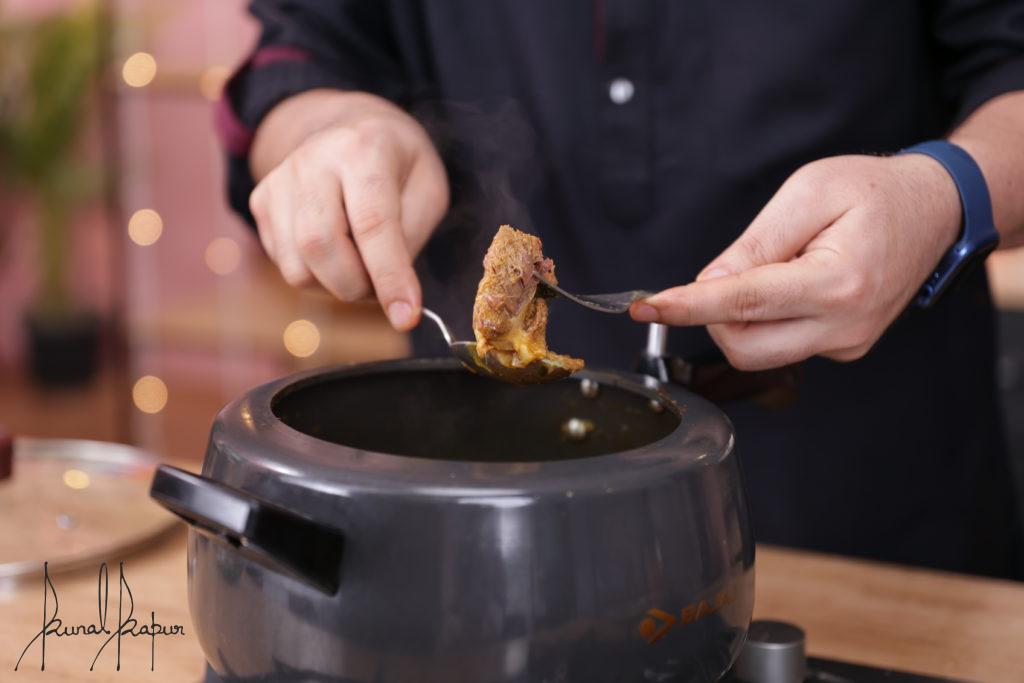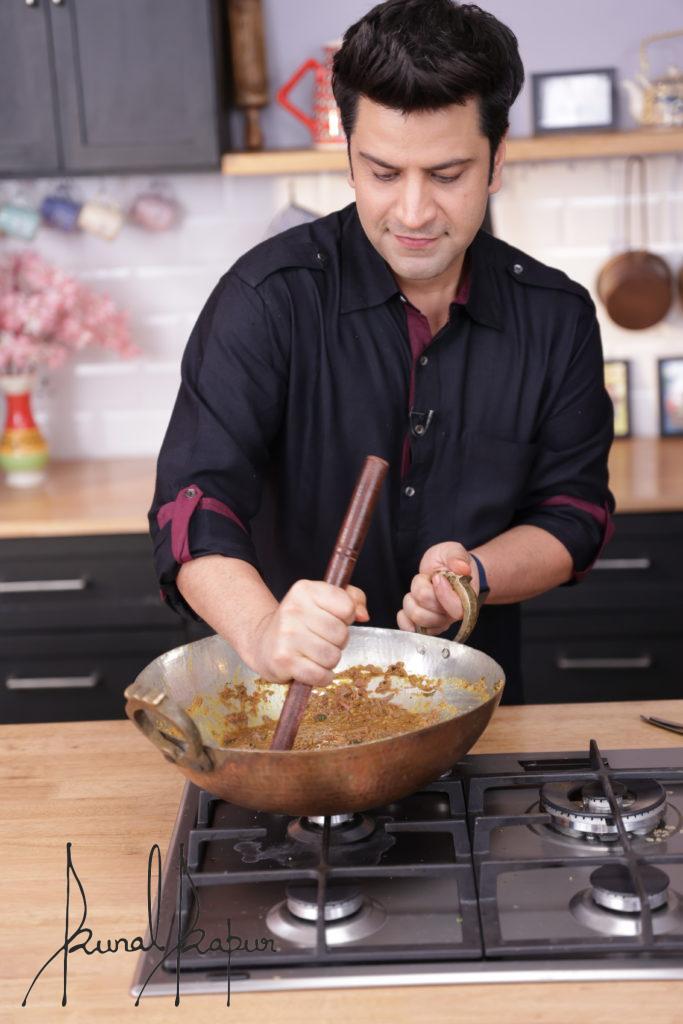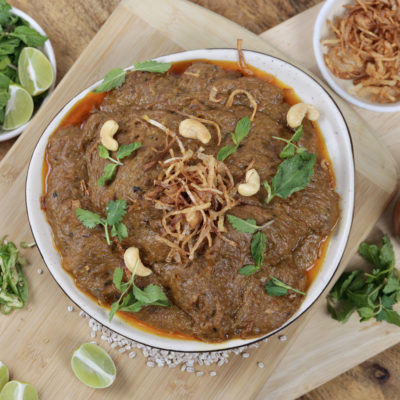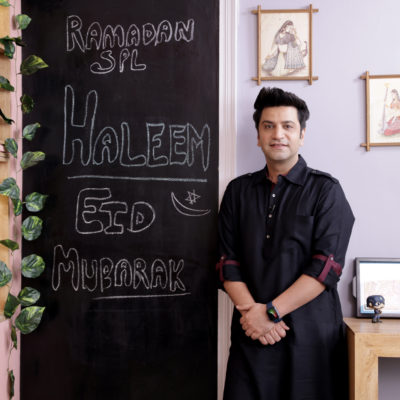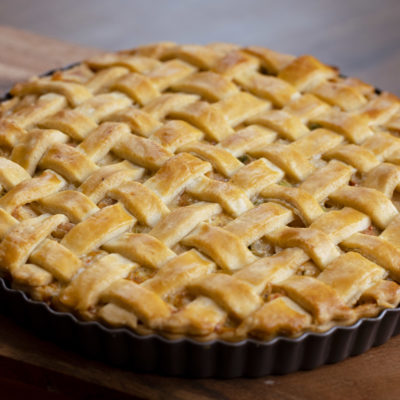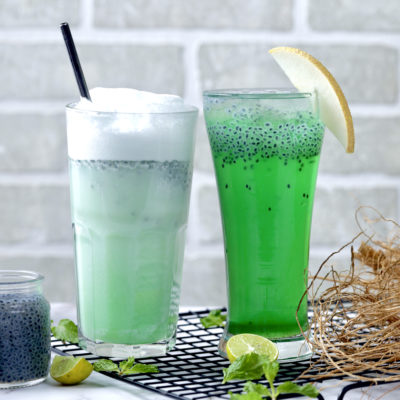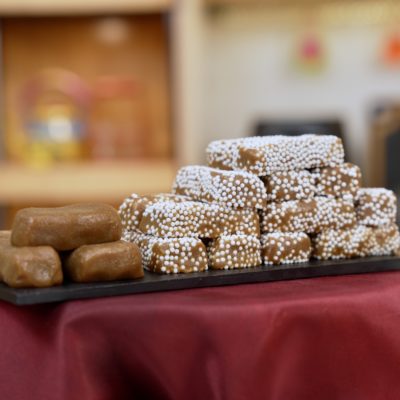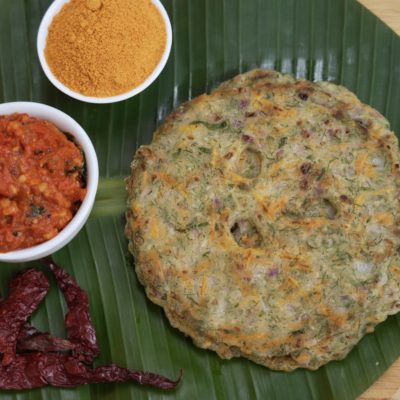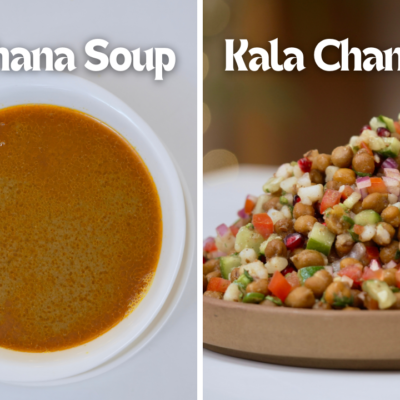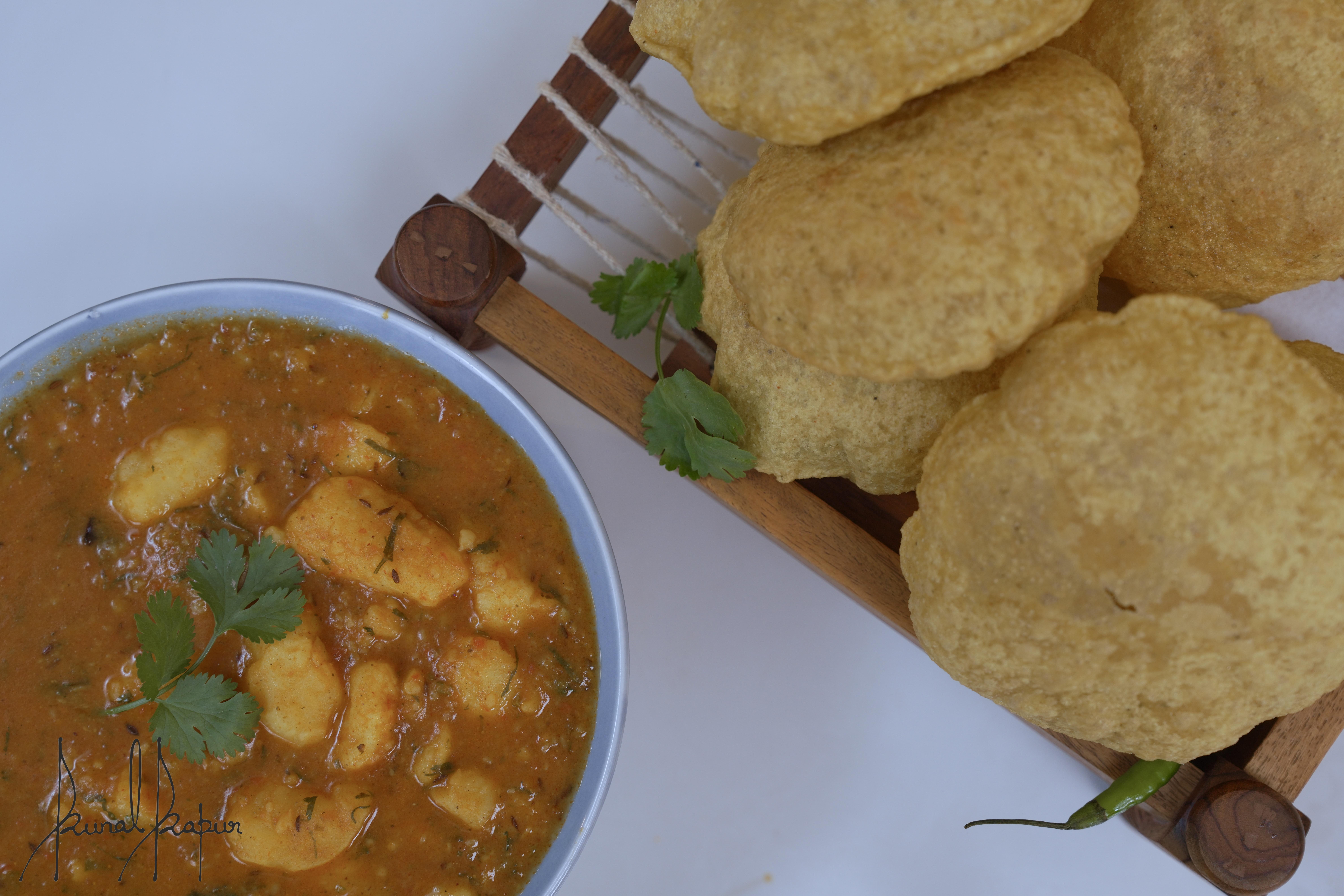Directions
History of Haleem
The thought behind Haleem was that it should be a minimalistic dish which could be afforded by everyone.
Haleem Ya Daleem ek meat, dal aur anaj se bana ek khichra hai jo Hindustan mein ek arse se banta araha hai. Aur haleem humko mila Harees se jiska zikar hai Kitab Al-Tabikh, jo ki ek 10 century arabic cookbook hai, which is also the world’s oldest surviving Arabic cookbook.
Haleem aata hai harees se jo ki ek middle easter dish hai jisse ramadan aur eid ke dauran banaya jata hai. It is a simple dish jisme broken wheat, fat aur meat ko ek saath pakaya jata hai bilkul ek porridge ki tarah. Ye ek simple dish hai jise mein zyada masale nahi padte.
Haleem Hyderabad mein kafi popular hai aur kehte hain ki kissi zamane mein persian jab wahan aaye to vo apane saath harees le kar aaye. To kai kehte hain ki yemen se soilders jab malabar coast par aaye to wo apne saath harees laye.
Kai communities mein isse meetha bhi banaya jata hai. Jee han meat aur vo bhi meetha. Barkas jo hyderabad se kutch hi door hai wahan par aaj bhi meetha haleem milta hai.
Halan ki hareet jab hindustan aaya to us mein masale, dal aur chawal dale gaye kyunki hindustan mein ye sab ingredients mite the.
The origin of Haleem can be traced way back to the 6th Century Persian King Khusrow. It is believed to have been known as Harissa or Harees in many Arab countries and the Arabs introduced this popular dish to the Nizam’s soldiers in Hyderabad.
Alisa is a fortifying ,wholesome & highly satisfying one pot dish & is normally served as a starter during marriages, religious festivals like Eid & other special occasions.
It is quite similar to harisa or harees which is a traditional Middle Eastern recipe. Yemeni Arab traders brought this dish with them to Kerala. Thus, one can say that Alisa is a sort of fusion food of Malabar region & Arabs.
Traditionally, Alisa is cooked in large pots on low flames & although it takes a lot of time to cook, the outcome is delicious. Here I’m going to use pressure cooker for faster cooking.
There are principally two variations of haleem traditionally, as far as the ingredients go. “In one variety, there is just wheat, barley and spices along with the meat. The second variety uses three to four varieties of lentils as well.
Ingredients
For Grains & Dals
Broken wheat (दलिया) – 50gm/ ½ cup
Barley (जौ) – 2tbsp
Chana Dal (चना दाल)- 1 tbsp
Urad Dal, skinless (उड़द दाल धुली) – 1 tbsp
Moong Dal, skinless (मूँग दाल धुली) – 1 tbsp
Masoor Dal (मैसूर दाल) – 1 tbsp
Almond (बादाम) – 5-6nos
Cashew nuts (काजू) – 5-6 nos
Water (पानी) – 1lt
For Mutton Marination
Mutton, boneless (बोनलेस मटन) – ½ kg
Mutton bones (मटन की हड्डी) – 250 gms (optional)
Salt (नमक) – to taste
Turmeric (हल्दी) – 1 tsp
Chilli powder (मिर्ची पाउडर) – 1¼ tbsp
Garam masala or Potli Masala (गरम मसाला या पोटली मसाला) – 1 tsp
Black Pepper powder (काली मिर्च पाउडर) – 1 tsp
Ginger garlic paste (अदरक लहसुन पेस्ट) – 2 tbsp
Curd (दही) – ¾ cup or180 grams
For Cooking
Ghee – 5tbsp
Cinnamon stick (दालचीनी) – 2 nos
Cardamom (इलाइची) – 8-10nos
Cloves (लौंग) – 7-8nos
Peppercorn (काली मिर्च) – 10-12nos
All spice (कबाबचीनी) – 8-10nos
Caraway (शाही जीरा) – 2 tsp
Onion, sliced (प्याज़) – ½ cup
Green chilies, slit (हरि मिर्च) – 2-3 nos
Coriander leaves (ताज़ा धनिया) – handful
Mint (पुदीना) – handful
Salt (नमक) – as required
Water (पानी) – 1 lt
For Garnish
Fried onions (तला हुआ प्याज़)
Fried cashews (तला हुआ काजू)
Mint & Coriander leaves (पुदीना & धनिया)
Steps
|
1
Done
|
For Grains & DalsMix all the grains and dals and wash with water twice. Pour 1 lt water and soak it for at least an hour. Now boil the grains and dals together till they are completely mashed. You can over and cook them on low heat. If required add more water while boiling. Once cooked it should be mashy & thick. Remove and cool completely. Now add them to a mixer grinder and grind it to a paste. Keep aside. |
|
2
Done
|
For Mutton Marination |
|
3
Done
|
For CookingHeat ghee in a pressure cooker. Add cinnamon, cardamom, cloves, peppercorn, all spice, shahi jeera and let them cook a bit in hot ghee. Add onions and cook them till are just about starting to get brown. Add marinated meat at this stage and on high heat cook the meat for 15-20mins. This bhunai (cooking) is important to impart a good flavour. |
|
4
Done
|
While cooking meat add fresh mint and coriander leaves and cook them along. Pour water and close the lid. Bring it to a quick boil so that the pressure cooker gives out the first whistle. Now lower the heat and cook for another 1hour or till the meat is overcooked to the point where you put a fork to it and all of the meat separates as fibre. |
|
5
Done
|
After an hour turn off the heat and let the pressure cooker sit for 10mins. Then carefully release steam and open the lid. Remove some of the ghee floating on top of the meat in a separate bowl. Remove the meat from the thin curry through a strainer and then using tongs remove all the bones and discard them. Add the meat back to the thin curry and place it in a kadai. Now using a Mathani (masher/churner) gently press the meat to separate all its fibres. We do not have to turn on the heat at this stage. |
|
6
Done
|
To this meat add the puréed grains & lentils and now turn on the heat and mash the meat again for 10mins. Once the meat porridge gets to a boil cook it till it starts to release its ghee from the sides. At this stage check and adjust salt and you can also add a bit of ghee which we removed earlier. Ramadan kareem & Eid Mubarak. |


